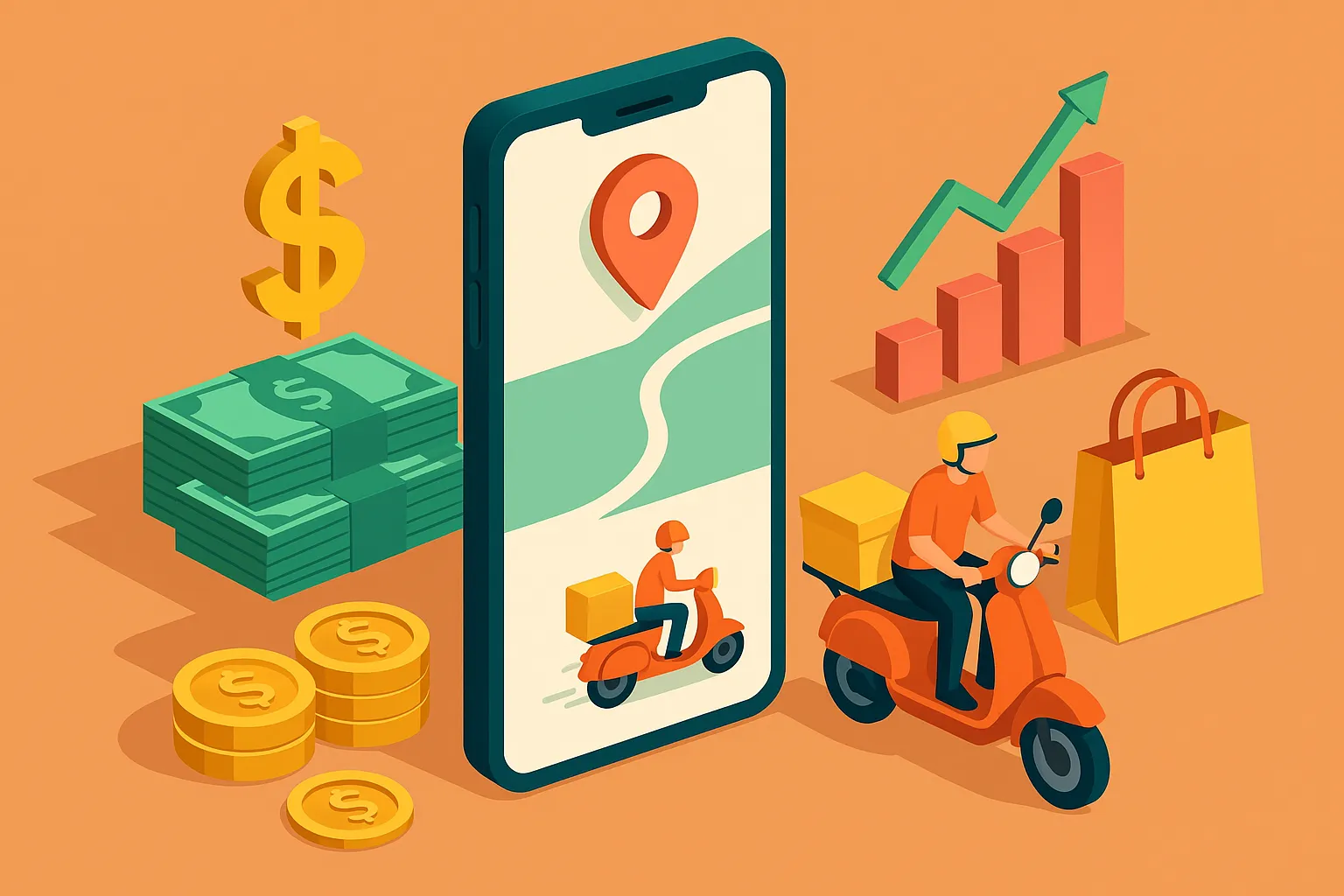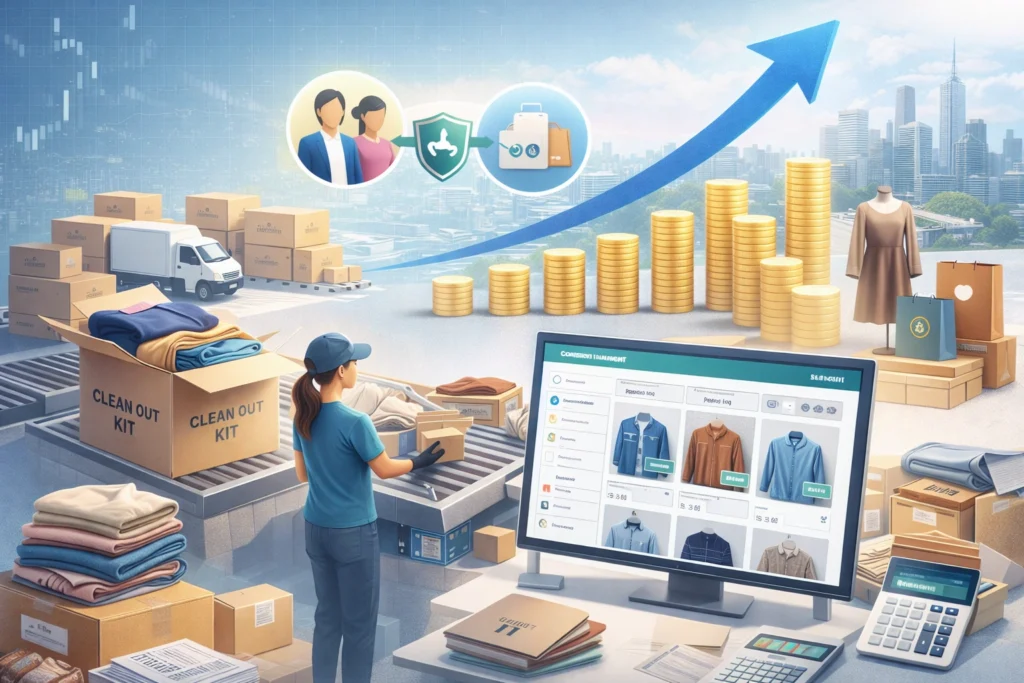Let’s be honest—if you’ve ever stared at your smartphone, hungry and helpless, watching a food delivery app ETA tick down from “35 mins” to “your driver is circling the neighborhood,” you know just how sticky these platforms are. Now, imagine being the founder on the other side of that equation—cash registers ringing with every tap. Tempting? That’s the exact kind of real-world traction a Glovo clone app can offer.
For entrepreneurs, startups, and creators navigating the digital marketplace, the success stories of on-demand delivery apps aren’t just impressive—they’re motivating. Glovo, Uber Eats, DoorDash, and Zomato aren’t just household names; they’re case studies in how solving everyday problems can turn into billion-dollar brands. With consumer habits swinging toward “instant everything,” Glovo-style platforms aren’t a passing trend—they’re the new neighborhood marketplace.
But how do you get in on that action without a VC war chest or Silicon Valley zip code? That’s where a Glovo clone app developed by pros (psst, like Miracuves) offers a fast, scalable, and surprisingly lucrative launchpad. Let’s dive deep into the business case, profit levers, and why the timing might be just right.
What Is a Glovo Clone App, Really?
A Glovo clone app is more than just a food delivery script—it’s an entire logistics ecosystem. Think of it as your digital genie: part delivery aggregator, part hyperlocal marketplace, part command center for entrepreneurs who want a slice of the gig economy pie.
Core Offerings That Mirror Glovo:
- Multi-category delivery (food, groceries, medicines, etc.)
- Real-time tracking for users and couriers
- In-app payments and commission management
- Dual interfaces for customers and delivery partners
- Admin dashboard for full control of operations
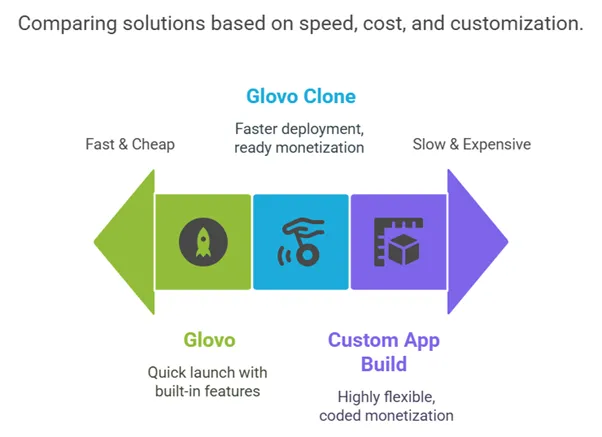
Why Glovo Clone Apps Are a Profit Powerhouse
1. Multiple Revenue Streams (Aka, Not Just a Delivery Fee)
If you think the only income comes from delivery charges, you’re leaving money on the table. A properly designed Glovo clone monetizes like a financial octopus:
- Commission on Orders: Take a cut (10–30%) from every transaction.
- Surge Pricing: Add premium fees during peak hours (think rainy evenings).
- Ad Placements: Local restaurants pay for featured slots.
- Subscription Plans: VIP users get zero delivery fees and faster dispatch.
- Third-Party Integrations: Add insurance, gift cards, loyalty points—charge per use.
2. Low Overhead, High Scalability
Unlike brick-and-mortar businesses, Glovo clone apps don’t require warehouses or storefronts. Your primary investment? Technology. Once the app is live, scaling from one neighborhood to ten cities is mostly a matter of adding delivery partners and onboarding local vendors.
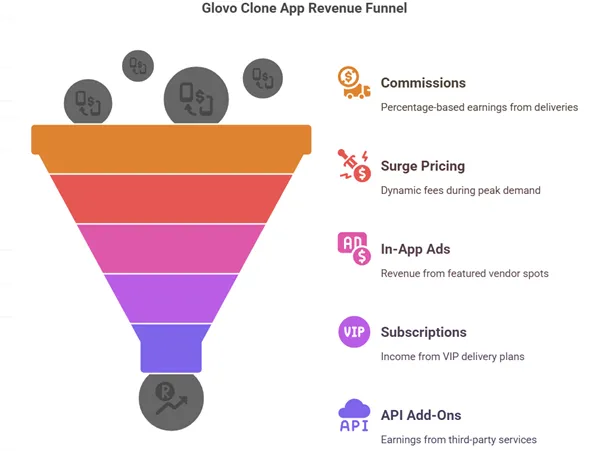
Market Trends Driving Demand
You’re not imagining it—people really are ordering more than ever. Here’s why Glovo clones are finding fertile ground:
- Hyperlocalization is hot: From instant noodles to phone chargers, users want items delivered now, not tomorrow.
- Smartphone penetration is exploding: 7 billion+ smartphones globally = your app in every pocket.
- Urbanization = on-demand living: Short on space, time, and patience, city-dwellers crave convenience.
- COVID-19 accelerated habits: Contactless delivery is no longer a feature—it’s a default expectation.
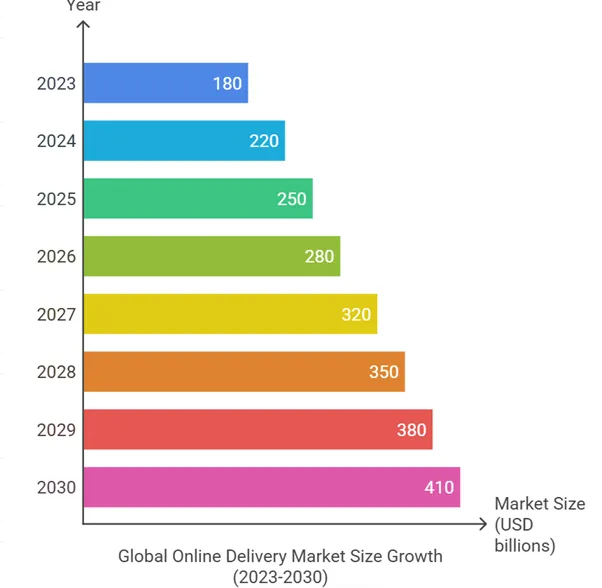
User Behavior Patterns That Feed Profit
People are creatures of habit—especially when it comes to food and convenience.
- Impulse orders = recurring revenue: Midnight cravings or “nothing in the fridge” moments translate to frequent orders.
- Loyalty loops: Offer rewards or gamified delivery points to turn casual users into die-hards.
- Push notifications = instant conversions: A 20% off alert at lunch? Cha-ching.
Key Features That Drive Monetization
Not all clones are created equal. Here’s what separates profitable Glovo clones from deadweight codebases:
1. Smart Search + Filters
Let users search by cravings, not categories. “Spicy noodles,” “keto snacks,” or “open now” gets orders rolling.
2. Dynamic Pricing Engine
Automate surge pricing based on time, location, or availability. Let the algorithm do the dirty work.
3. Wallets + Referral Systems
Let users top-up and refer friends. Preloaded money means locked-in orders.
4. Delivery Partner Ratings
Incentivize great service—happy customers tip better. Better tips = more loyal delivery partners.
How Miracuves Supercharges Glovo Clone Success
Here’s the million-dollar insight—cloning the interface isn’t enough. To win, you need performance, polish, and personalization. Miracuves brings the heat.
- Battle-Tested Codebase: Our clones aren’t MVPs—they’re ready to scale.
- Custom Integrations: Add regional payment gateways, tax setups, or even drone delivery logic.
- Post-Launch Support: We don’t vanish after the invoice. Think upgrades, A/B tests, and conversion tweaks.
How Much Can You Earn? Let’s Talk Math
Let’s play fantasy founder for a second.
- 10,000 monthly orders
- Average order value: $12
- Commission: 20%
= $24,000 per month revenue from commissions alone
Add surge, ads, and subscriptions? You could be looking at $40K/month or more. And that’s with just one city.
Common Mistakes Founders Make (And How to Dodge Them)
Mistake 1: Launching Without Vendor Network
No restaurants = no orders. Start onboarding vendors before you even finish your app’s splash screen.
Mistake 2: Ignoring Logistics Intelligence
An app that doesn’t track delivery delays, idle time, or route clustering is bleeding money.
Mistake 3: Skimping on UX
Ugly = uninstall. Your app has 7 seconds to impress.
The Global Opportunity (Beyond Burgers and Fries)
Don’t limit your thinking. A Glovo clone can go niche:
- Medicines & wellness delivery
- Pet supplies
- Cloud kitchens & home chefs
- Local gifts & flowers
- B2B logistics for small shops
Niche = less competition + higher loyalty.
Conclusion
The food delivery boom isn’t fizzling out—it’s morphing into an all-in-one on-demand economy. For founders, Glovo clone apps offer a chance to tap into a proven, profitable model without spending years in development hell. From commission stacking to subscription margins, the profit levers are many—and growing. What you need is a fast, scalable launch, not another project that collects dust.
At Miracuves, we help innovators launch high-performance app clones that are fast, scalable, and monetization-ready. Ready to turn your idea into reality? Let’s build together.
FAQs
1. What is a Glovo clone app?
A Glovo clone app is a pre-built delivery platform modeled after Glovo, supporting multi-category delivery, real-time tracking, and monetization features.
2. How much does it cost to build a Glovo clone?
It varies by customization, but expect anywhere between $5,000–$25,000 for a fully functional, scalable version with premium support.
3. Can I customize it for my country’s currency, language, and tax laws?
Absolutely. With a developer like Miracuves, regional customization is not only possible—it’s recommended.
4. How long does it take to launch a Glovo clone?
With a ready-made framework, you can go live in as little as 2–4 weeks. Add a bit of custom branding and UX polish, and you’re good to go.
5. What backend tech powers these apps?
Typically Node.js, MongoDB, or Firebase—whatever best suits real-time operations and scalability.



